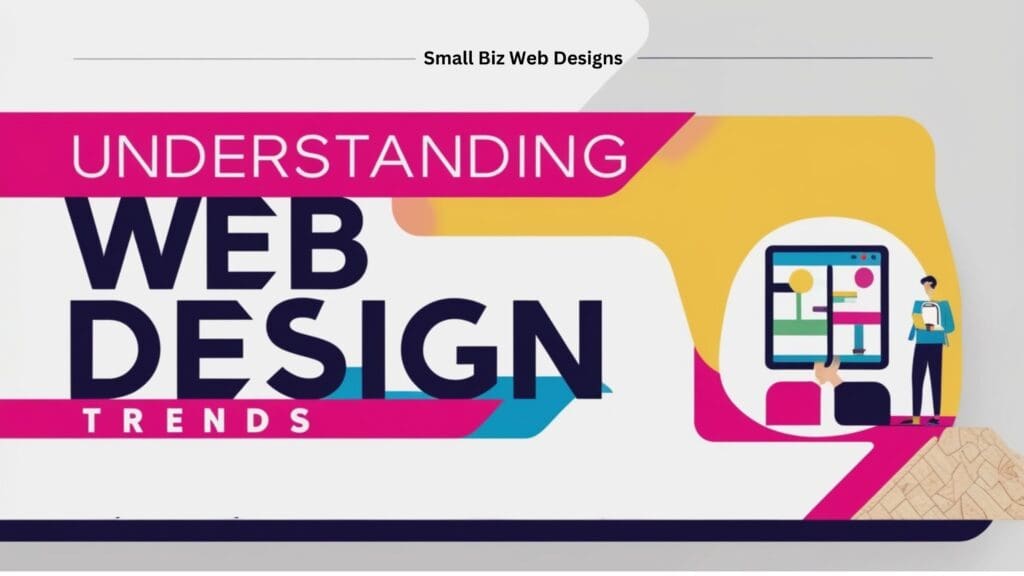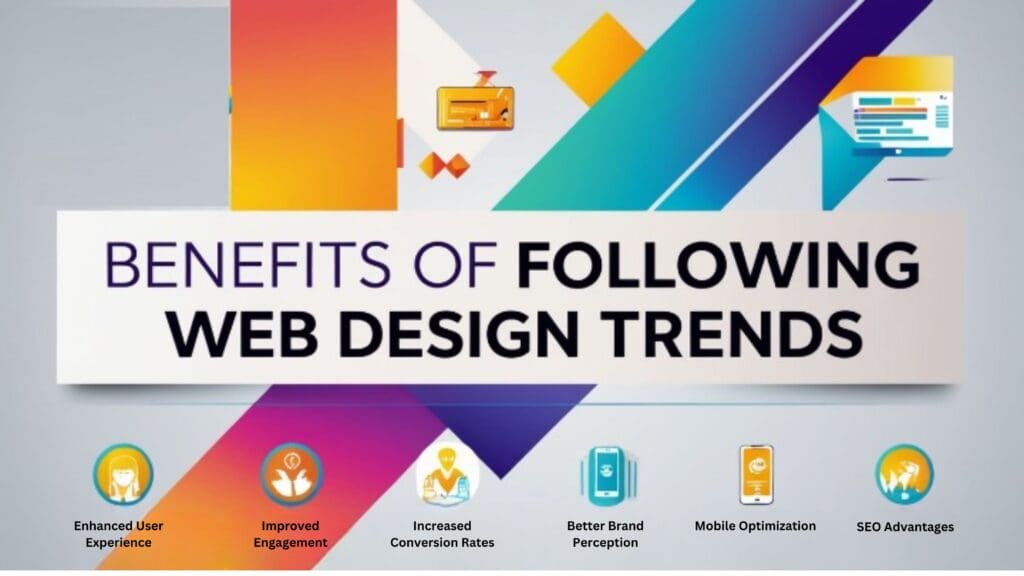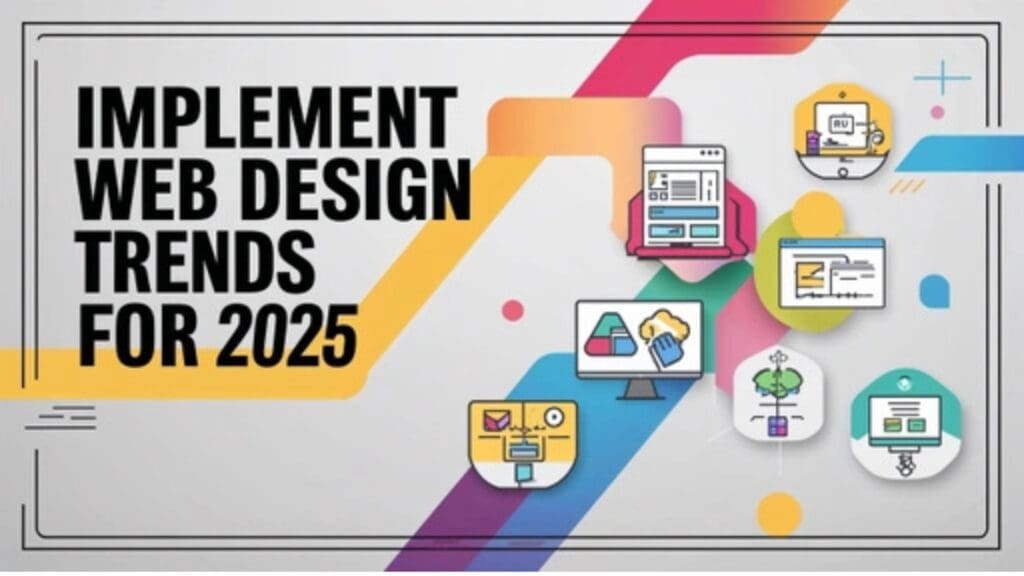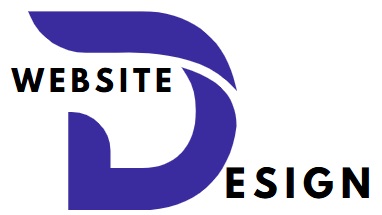As we step into 2025, the digital landscape is evolving at an unprecedented pace. With rapid technological advancements and changing user preferences, web design trends are continuously shifting. Understanding these trends is essential for businesses and designers alike to create engaging and effective online experiences. In this ultimate guide, we will explore the top 10 web design trends for 2025, providing insights into how they can enhance user experience, improve engagement, and ultimately drive conversions.
Introduction
Imagine visiting a website that not only looks stunning but also provides a seamless user experience tailored to your needs. As digital consumers become more discerning, the importance of innovative web design cannot be overstated. In 2025, the focus will be on creating websites that are not only visually appealing but also functional and user-friendly.
This guide will delve into the top 10 web design trends for 2025, exploring each trend’s significance and how to implement them effectively. Whether you’re a business owner looking to revamp your website or a designer seeking inspiration, this article will equip you with the knowledge to stay ahead of the curve.
What You Will Learn:
- The significance of each web design trend for 2025.
- How to implement these trends effectively.
- Tools and resources to aid in your web design journey.
- Answers to frequently asked questions about web design trends.
Section 1: Understanding Web Design Trends

What Are Web Design Trends?
Web design trends refer to the evolving styles, techniques, and technologies that shape how websites are created and experienced. These trends are influenced by user behavior, technological advancements, and aesthetic preferences. Understanding these trends is crucial for anyone involved in web design, as they dictate how effectively a website can communicate its message and engage its audience.
The Importance of Staying Updated
Staying current with web design trends is vital for several reasons:
- User Expectations: As technology evolves, so do user expectations. Users now demand faster, more intuitive, and aesthetically pleasing websites.
- Competitive Advantage: Businesses that adopt the latest design trends can differentiate themselves from competitors and attract more visitors.
- SEO Benefits: Many modern design practices enhance SEO, helping websites rank better on search engines.
Common Misconceptions About Web Design Trends
- Trends Are Just Fads: While some trends may fade, many become integral to web design. For example, responsive design was once a trend but is now a standard practice.
- All Trends Are Suitable for Every Business: Not every trend will fit every brand. It’s essential to choose trends that align with your brand identity and target audience.
- Trends Are Only for Aesthetics: Many trends focus on functionality and user experience, which are just as crucial as aesthetics.
Section 2: Benefits of Following Web Design Trends

Embracing the latest web design trends offers numerous benefits, including:
1. Enhanced User Experience
Modern design trends prioritize user experience, making websites easier to navigate and more enjoyable to use. This can lead to longer visit durations and lower bounce rates.
2. Improved Engagement
Websites that incorporate engaging design elements, such as animations and interactive features, can capture users’ attention and encourage them to explore more content.
3. Increased Conversion Rates
A well-designed website can guide users toward desired actions, such as signing up for a newsletter or completing a purchase. By following trends that enhance usability, businesses can improve their conversion rates.
4. Better Brand Perception
A modern, aesthetically pleasing website enhances a brand’s credibility and professionalism. Users are more likely to trust and engage with brands that invest in their online presence.
5. SEO Advantages
Many contemporary design practices, such as mobile optimization and fast loading times, contribute to better search engine rankings, making it easier for potential customers to find your website.
Real-Life Example: Case Study of a Successful Redesign
Consider the case of XYZ Corp, which revamped its website to incorporate minimalist design and mobile optimization. As a result, they saw a 50% increase in user engagement and a 30% boost in conversion rates within three months of launching the new site.
Section 3: How to Implement Web Design Trends for 2025
To effectively implement the top 10 web design trends for 2025, consider the following strategies:

Step 1: Research and Identify Trends
Stay informed about emerging trends by following industry blogs, attending webinars, and participating in design communities. Identify which trends resonate with your brand and audience.
Step 2: Create a Design Plan
Develop a comprehensive design plan that outlines how you will incorporate selected trends into your website. Consider factors such as layout, color schemes, typography, and user flow.
Step 3: Use the Right Tools
Utilize design tools and software that facilitate the implementation of modern design trends. Tools like Adobe XD, Figma, and Sketch can help streamline the design process.
Step 4: Test and Iterate
Before launching your redesigned website, conduct user testing to gather feedback on the new design. Use this feedback to make necessary adjustments and improvements.
Step 5: Monitor Performance
After launching your website, monitor its performance using analytics tools. Track metrics such as bounce rates, conversion rates, and user engagement to assess the effectiveness of your design changes.
Section 4: Tools and Resources for Web Design
Essential Tools for Designers
- Adobe XD: A powerful design tool for creating wireframes, prototypes, and user interfaces.
- Figma: A collaborative design platform that allows teams to work together in real time.
- Sketch: A popular design tool for creating responsive web designs and interfaces.
- Canva: An easy-to-use graphic design tool that helps create stunning visuals for your website.
- InVision: A prototyping tool that allows designers to create interactive mockups and gather feedback.
Resources for Learning and Inspiration
- Web Design Blogs: Follow blogs like Smashing Magazine and A List Apart for the latest trends and insights.
- Online Courses: Platforms like Coursera and Udemy offer courses on web design principles and trends.
- Design Communities: Join communities like Dribbble and Behance to share your work and gain inspiration from others.
- YouTube Channels: Channels like The Futur and Flux Academy provide valuable tutorials and insights into modern web design.
Section 5: FAQs About Web Design Trends
Q1: What are the most important web design trends for 2025?
The most important trends include dark mode design, minimalist aesthetics, 3D and immersive experiences, AI-powered personalization, and sustainable web design.
Q2: How can I choose the right web design trends for my business?
Consider your target audience, brand identity, and the goals of your website. Research which trends resonate with your audience and align with your brand values.
Q3: Are web design trends the same for all industries?
While some trends may be universally applicable, others may vary based on industry. It’s essential to tailor trends to fit the specific needs and preferences of your target audience.
Q4: How can I ensure my website remains relevant as trends change?
Regularly update your website based on emerging trends and user feedback. Conduct periodic reviews to assess the effectiveness of your design and make necessary adjustments.
Q5: What role does mobile optimization play in web design trends?
Mobile optimization is crucial in today’s digital landscape, as more users access websites via mobile devices. Ensuring your site is responsive and user-friendly on mobile is essential for retaining visitors.
Section 6: Top 10 Web Design Trends for 2025
Now, let’s dive into the top 10 web design trends for 2025 in detail:
1. Dark Mode Design
Dark mode has gained immense popularity in recent years, and it’s set to dominate web design trends for 2025. This design approach not only reduces eye strain but also enhances battery life on mobile devices. Websites that incorporate dark mode will provide users with a modern and sleek aesthetic, making content more readable and visually appealing.
Implementation Tips:
- Offer a toggle switch for users to choose between light and dark modes.
- Ensure that color contrasts are sufficient for readability in dark mode.
- Use dark backgrounds with lighter text and vibrant accent colors for a striking effect.
2. Minimalist Aesthetics
Simplicity is key in 2025. Minimalist web design focuses on essential elements, eliminating clutter and distractions. This trend emphasizes clean lines, ample white space, and a limited color palette. By adopting a minimalist approach, designers can create intuitive user experiences that guide visitors toward key actions, such as signing up or making a purchase.
Implementation Tips:
- Use a grid layout to organize content effectively.
- Limit the number of colors and fonts to create a cohesive look.
- Prioritize essential information and calls to action.
3. 3D and Immersive Experiences
As technology advances, so does the ability to create immersive web experiences. In 2025, expect to see more websites utilizing 3D graphics and animations to engage users. These elements can enhance storytelling and provide a more interactive experience, making visitors feel like they are part of the content. Tools like WebGL and CSS3 will play a significant role in bringing these designs to life.
Implementation Tips:
- Use 3D models to showcase products in e-commerce sites.
- Incorporate subtle animations to guide users through the site.
- Ensure that 3D elements do not compromise loading times.
4. AI-Powered Personalization
Artificial intelligence (AI) is revolutionizing web design by enabling personalized user experiences. In 2025, websites will increasingly use AI algorithms to analyze user behavior and preferences, tailoring content and recommendations accordingly. This trend will enhance user engagement and satisfaction, leading to higher conversion rates.
Implementation Tips:
- Use AI tools to analyze user data and provide personalized content.
- Implement chatbots for real-time customer support and personalized interactions.
- Create dynamic content that changes based on user behavior.
5. Voice User Interface (VUI)
With the rise of smart speakers and voice assistants, integrating voice user interfaces into web design is becoming essential. In 2025, websites will need to accommodate voice search and commands, allowing users to navigate and interact with content hands-free. This trend will improve accessibility and provide a seamless experience for users who prefer voice interactions.
Implementation Tips:
- Optimize content for voice search by using natural language and question-based queries.
- Implement voice commands for navigation and actions on the website.
- Ensure that the website is accessible for users with disabilities.
6. Sustainable Web Design
As environmental concerns grow, sustainable web design will become a priority in 2025. Designers will focus on creating energy-efficient websites that minimize carbon footprints. This includes optimizing images, reducing server load, and using eco-friendly hosting solutions. By adopting sustainable practices, businesses can appeal to environmentally conscious consumers and contribute to a healthier planet.
Implementation Tips:
- Optimize images and videos to reduce loading times and server load.
- Choose green hosting providers that use renewable energy.
- Design for efficiency by minimizing the use of heavy scripts and plugins.
7. Augmented Reality (AR) Integration
Augmented reality is set to transform web design in 2025. By integrating AR features, websites can offer interactive experiences that blend the digital and physical worlds. For example, e-commerce sites can allow customers to visualize products in their own space before making a purchase. This trend will enhance user engagement and drive sales by providing a unique shopping experience.
Implementation Tips:
- Use AR tools to create interactive product displays.
- Allow users to visualize how products will look in their environment.
- Ensure that AR features are compatible with various devices.
8. Dynamic and Fluid Layouts
Static layouts are becoming a thing of the past. In 2025, dynamic and fluid layouts will take center stage, allowing websites to adapt to various screen sizes and orientations seamlessly. This trend ensures that users have a consistent experience across devices, from desktops to smartphones. Responsive design will be crucial in meeting the demands of an increasingly mobile-first audience.
Implementation Tips:
- Use CSS Grid and Flexbox to create flexible layouts.
- Test designs on multiple devices to ensure compatibility.
- Prioritize mobile-first design to enhance user experience on smartphones.
9. Typography as a Design Element
Typography is evolving beyond mere readability. In 2025, bold and creative typography will play a significant role in web design. Designers will experiment with unique fonts, sizes, and styles to create visual hierarchy and enhance brand identity. This trend will help websites stand out and convey messages more effectively.
Implementation Tips:
- Choose fonts that reflect your brand’s personality.
- Use varying font sizes and weights to create a visual hierarchy.
- Ensure that typography is legible across all devices.
10. Inclusive and Accessible Design
As awareness of inclusivity grows, web design trends for 2025 will prioritize accessibility. Designers will focus on creating websites that cater to all users, including those with disabilities. This includes implementing features like screen reader compatibility, keyboard navigation, and color contrast adjustments. By embracing inclusive design, businesses can reach a broader audience and demonstrate their commitment to social responsibility.
Implementation Tips:
- Follow WCAG (Web Content Accessibility Guidelines) to ensure compliance.
- Use alt text for images and descriptive labels for form fields.
- Test your website with accessibility tools to identify areas for improvement.
Conclusion
As we look forward to 2025, understanding and implementing the top 10 web design trends will be vital for businesses aiming to create impactful online experiences. From embracing dark mode and minimalist aesthetics to integrating AI and sustainable practices, these trends will shape the future of web design.
By staying informed and adapting to these trends, you can enhance user experience, boost engagement, and drive conversions. Don’t hesitate to explore these trends further and consider how they can benefit your website.
Are you ready to transform your website with the latest design trends? Share your thoughts in the comments below, and subscribe to our newsletter for more insights on web design and digital marketing strategies!

